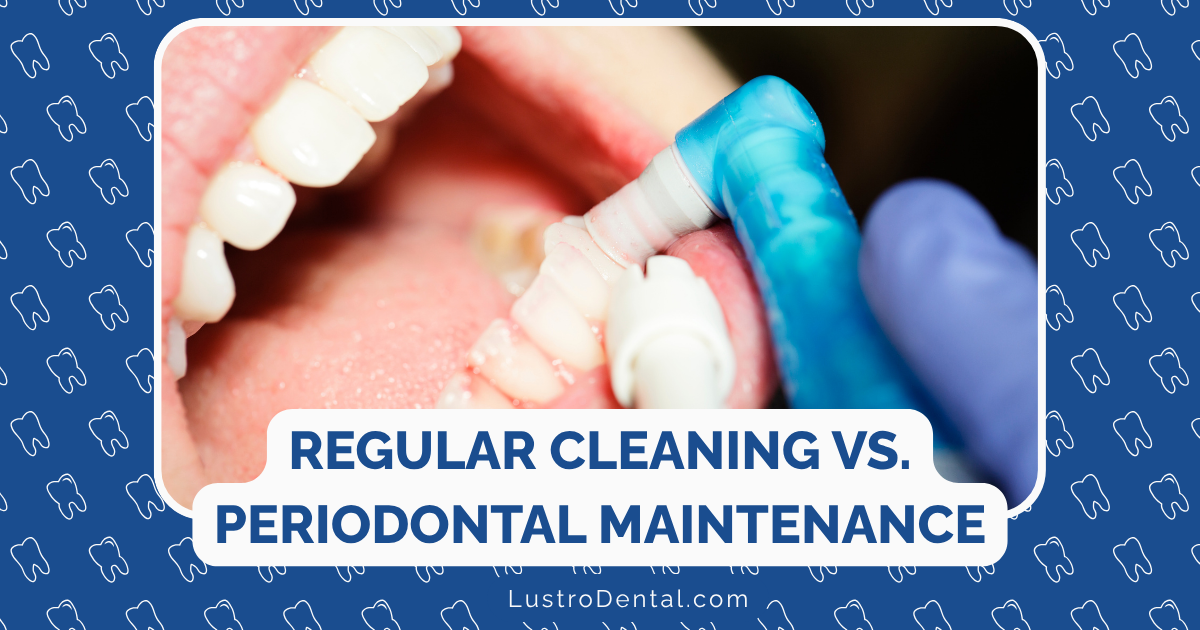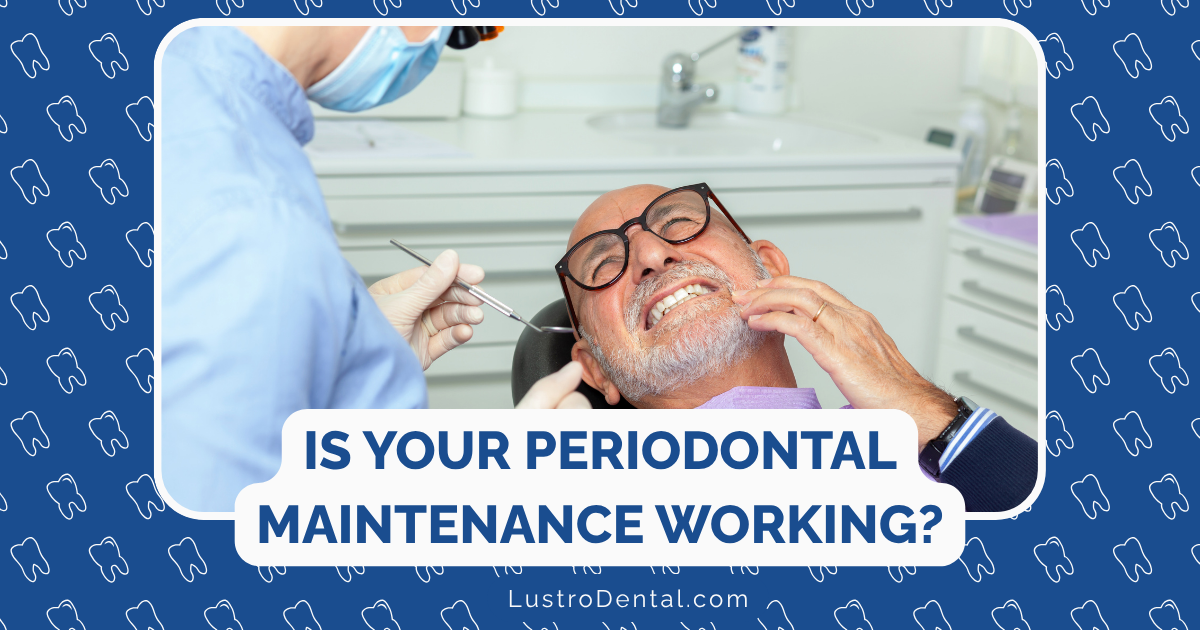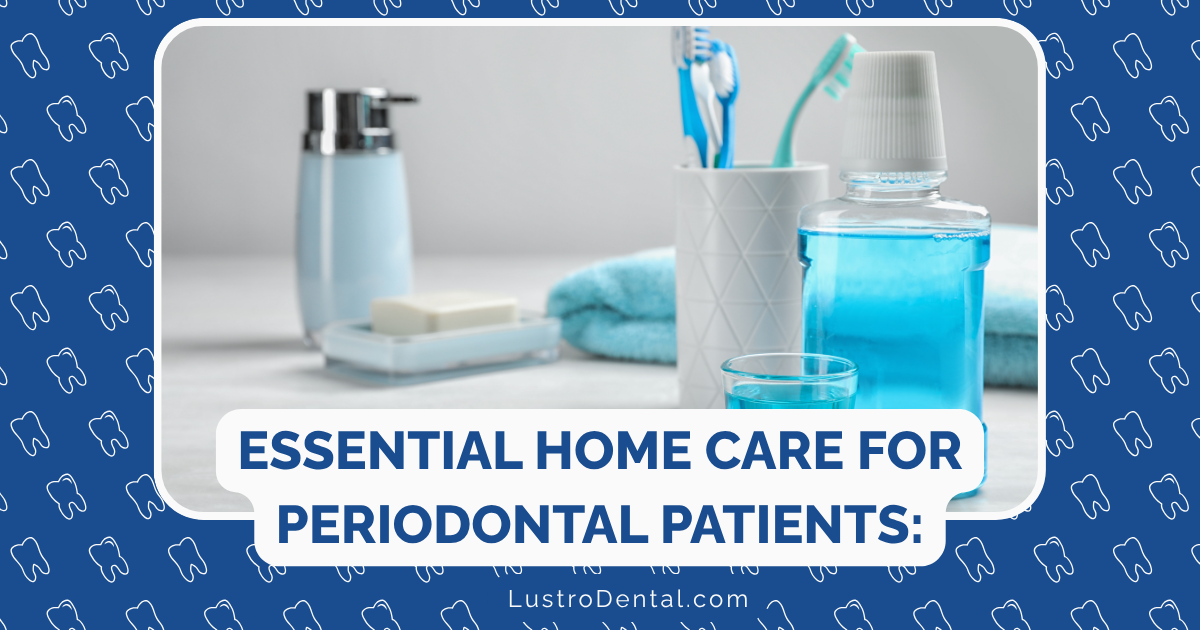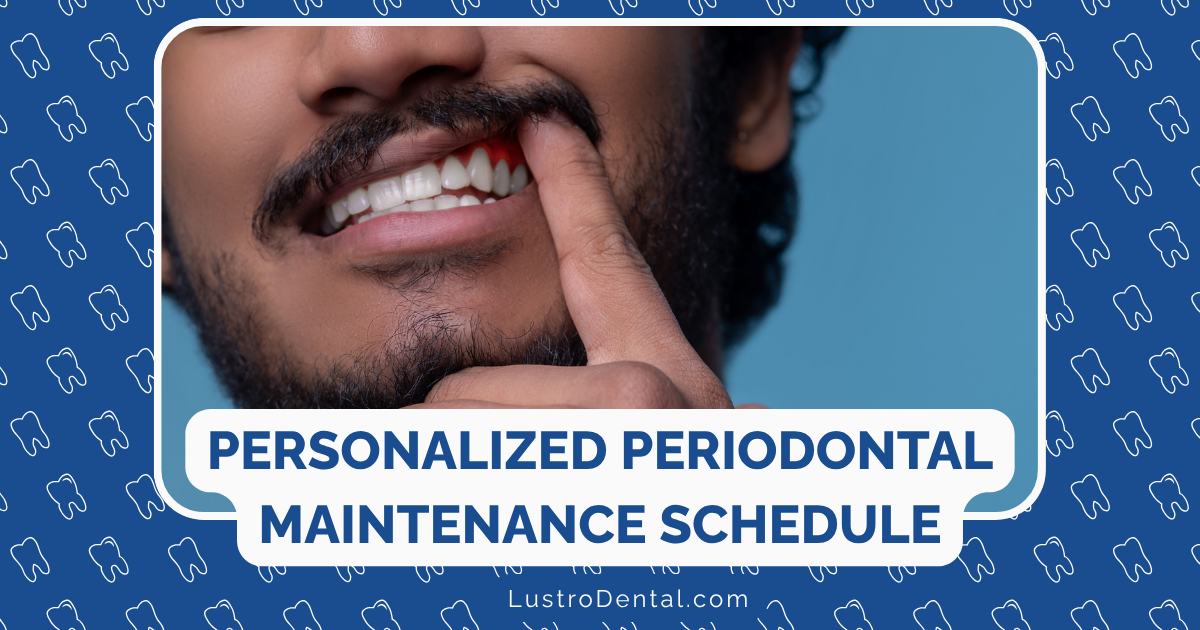Why Regular Cleanings Aren’t Enough After Gum Disease Treatment
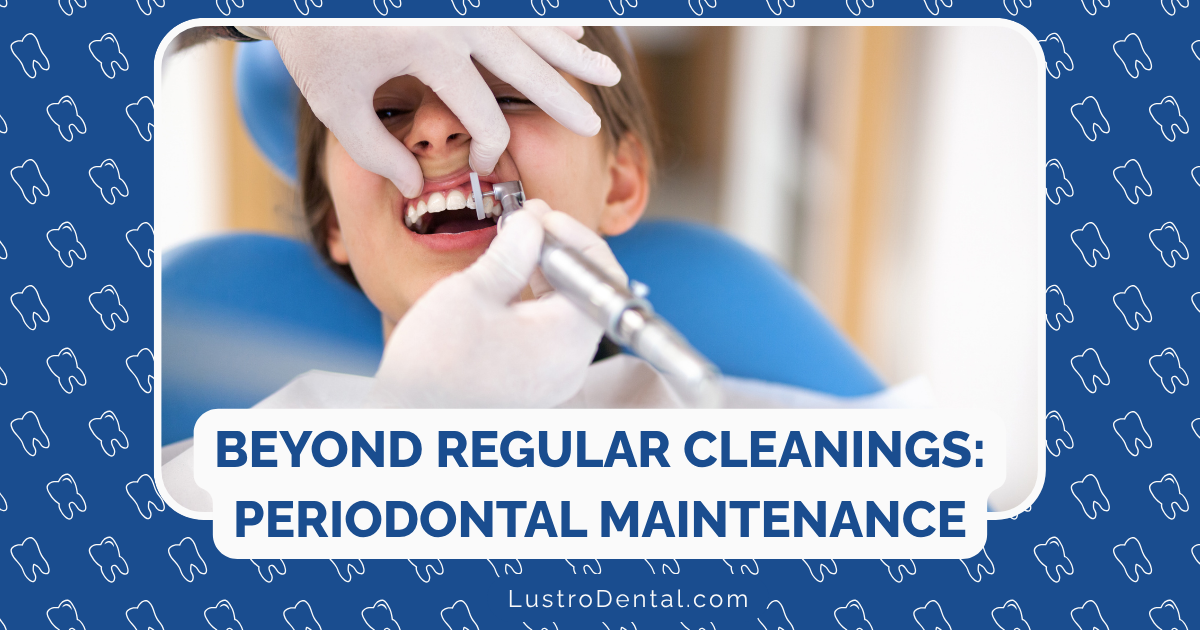
If you’ve recently completed treatment for gum disease, congratulations on taking that important step toward better oral health! Whether you underwent scaling and root planing (deep cleaning), laser therapy, or even surgical intervention, you’ve made a significant investment in your smile and overall wellbeing.
But here’s something your dental team may have mentioned that bears repeating: your journey with gum health isn’t over. In fact, it’s just entered a new phase—one that requires a different approach to maintenance than what worked before your diagnosis.
Many patients ask me, “Now that my gum disease is treated, can I just go back to regular six-month cleanings?” It’s a reasonable question, but the answer is a clear and evidence-based “no.” Let me explain why periodontal maintenance—not standard cleanings—is essential after gum disease treatment, and how this specialized care protects your oral health investment for years to come.
Understanding the Persistent Nature of Gum Disease
First, it’s important to understand a fundamental truth about periodontal disease: it’s a chronic condition that can be controlled but not permanently cured. Dr. Joan Otomo-Corgel, former president of the American Academy of Periodontology, explains it well: “Periodontal disease is similar to other chronic conditions like diabetes or cardiovascular disease—it can have active and inactive phases, and requires ongoing management to prevent recurrence and progression.”
This chronic nature stems from several factors:
1. Bacterial Recolonization Happens Quickly
The primary cause of gum disease is bacterial infection. Even after the most thorough treatment, some bacteria remain in the periodontal environment. Research shows that harmful bacteria can recolonize in treated areas in as little as 8-12 weeks after therapy. Without regular disruption of this bacterial regrowth, inflammation and infection can return.
A 2023 study published in the Journal of Clinical Periodontology found that periodontal pathogens can become dominant in just three to 12 weeks if biofilm is not adequately disrupted—well before the standard six-month cleaning interval.
2. Deeper Pockets Require Specialized Attention
One of the hallmarks of gum disease is the formation of periodontal pockets—spaces between your teeth and gums where bacteria can hide and multiply. Even after successful treatment, these pockets may remain deeper than the 1-3mm found in healthy gums.
Standard dental cleanings primarily address areas above or just slightly below the gumline, while periodontal maintenance specifically targets these deeper pockets where bacteria are most likely to reestablish their colonies.
3. Your Susceptibility Remains
If you’ve had gum disease once, you have a higher risk of recurrence. This increased susceptibility may be due to:
- Genetic factors that influence your immune response
- Systemic conditions like diabetes that affect healing
- Anatomical features such as tooth position or root structure
- Past damage to gum attachment and supporting bone
This doesn’t mean you’re destined to lose your teeth—far from it! It simply means you need a more proactive maintenance approach tailored to your specific risk profile.
Periodontal Maintenance vs. Regular Cleanings: Understanding the Difference
To appreciate why regular cleanings aren’t sufficient after gum disease treatment, let’s clarify the differences between standard prophylaxis (regular cleaning) and periodontal maintenance:
Standard Prophylaxis (Regular Cleaning)
- Purpose: Preventive care for patients with generally healthy gums
- Focus: Primarily removes plaque and tartar above and slightly below the gumline
- Depth: Typically addresses areas with pocket depths of 1-3mm
- Frequency: Usually performed every 6 months
- Insurance classification: Considered a preventive service
Periodontal Maintenance
- Purpose: Therapeutic care for patients with a history of periodontal disease
- Focus: Removes bacteria and debris from both above and below the gumline, with special attention to deeper pockets
- Depth: Addresses areas with pocket depths of 4mm or greater
- Frequency: Typically performed every 3-4 months
- Insurance classification: Usually considered a basic or periodontal service
Dr. Michael Wilson, periodontist at Mayo Clinic, notes: “The difference isn’t just in technique—it’s in the entire approach. Periodontal maintenance is an active disease management strategy, not simply a cleaning.”
The Science Behind the 3-4 Month Interval
You might wonder why the recommended interval for periodontal maintenance is typically 3-4 months rather than the standard 6 months for regular cleanings. This timeframe isn’t arbitrary—it’s based on scientific understanding of bacterial recolonization and disease progression.
Studies on the regrowth of periodontal bacteria after treatment show that:
- Bacterial recolonization begins immediately after treatment
- By 8-12 weeks, bacterial levels can approach pre-treatment levels
- After 12 weeks, inflammatory markers begin to increase
- By 6 months, significant recolonization has typically occurred, potentially triggering renewed disease activity
A landmark study published in the Journal of Periodontology found that patients who received periodontal maintenance every 3 months had significantly better outcomes than those seen every 6 months, including:
- Less plaque accumulation
- Reduced bleeding on probing
- More stable attachment levels
- Less bone loss over time
This research provides the scientific foundation for the 3-4 month recall interval that most periodontists and dentists recommend.
The Consequences of Inadequate Maintenance
What happens if you opt for standard cleanings instead of periodontal maintenance after gum disease treatment? Unfortunately, the consequences can be serious and costly:
1. Disease Recurrence and Progression
Without proper maintenance, periodontal disease often returns, sometimes more aggressively than before. Research indicates that patients who do not adhere to recommended periodontal maintenance protocols experience:
- 2-3 times more tooth loss than compliant patients
- Faster recurrence of deep pockets
- More rapid bone loss
- Increased need for additional invasive treatments
2. Wasted Investment
The time, discomfort, and financial resources you invested in your initial periodontal treatment can be compromised without proper follow-up care. It’s like renovating a house but skipping routine maintenance—eventually, the problems return, often requiring more extensive and expensive repairs.
3. Systemic Health Implications
The connection between periodontal disease and systemic health is well-established. Ongoing periodontal inflammation has been linked to:
- Cardiovascular disease
- Diabetes complications
- Respiratory conditions
- Rheumatoid arthritis
- Adverse pregnancy outcomes
By maintaining periodontal health, you’re potentially protecting more than just your smile—you’re supporting your overall wellbeing.
What to Expect During Periodontal Maintenance
Periodontal maintenance appointments are more comprehensive than standard cleanings. A typical visit includes:
1. Thorough Assessment
- Medical history update: Changes in medications or health conditions that might affect your periodontal health
- Oral cancer screening: Examination of oral tissues for any suspicious changes
- Periodontal evaluation: Measurement of pocket depths to track stability or changes
- Assessment of gum attachment levels: Monitoring for any signs of disease recurrence
- Evaluation of tooth mobility: Checking for signs of bone loss or occlusal issues
2. Professional Cleaning
- Removal of supragingival plaque and calculus: Cleaning above the gumline
- Subgingival scaling: Removal of bacteria and deposits from below the gumline
- Root debridement: Cleaning of root surfaces in deeper pockets
- Irrigation: Sometimes used to deliver antimicrobial agents to deeper pockets
3. Personalized Guidance
- Review of home care techniques: Ensuring you’re using the most effective brushing and flossing methods
- Recommendation of specialized tools: Such as interdental brushes, water flossers, or antimicrobial rinses
- Discussion of risk factors: Addressing smoking, diet, or other factors affecting your periodontal health
4. Future Planning
- Adjustment of maintenance intervals: Based on your response to treatment and risk factors
- Identification of problem areas: That may need additional attention or intervention
- Coordination with specialists: If more advanced treatment is needed
Making Periodontal Maintenance Work for You
While the need for more frequent dental visits might seem daunting, there are ways to make periodontal maintenance more manageable:
1. Understand Your Insurance Coverage
Many dental insurance plans cover periodontal maintenance differently than regular cleanings. Typically, they recognize the medical necessity of this treatment and provide coverage, though often with different copays or frequency limitations. Talk to your dental office’s insurance coordinator to understand your benefits.
2. Consider the Long-Term Economics
While periodontal maintenance may seem more expensive in the short term, it’s far more cost-effective than dealing with recurrent disease, additional treatments, or tooth replacement. Prevention is almost always less expensive than treatment.
3. Optimize Your Home Care
The better your daily oral hygiene, the more successful your periodontal maintenance will be. Invest in the tools and techniques recommended by your dental team, which might include:
- Electric toothbrush: For more effective plaque removal
- Water flosser: To clean deeper in periodontal pockets
- Interdental brushes: For cleaning between teeth with wider spaces
- Antimicrobial mouth rinses: To help control bacterial regrowth
4. Address Contributing Factors
Work with your dental team and physician to manage conditions that affect your periodontal health:
- Smoking cessation: Tobacco use significantly worsens periodontal disease
- Diabetes management: Good glycemic control improves periodontal outcomes
- Stress reduction: Chronic stress can impair immune function and healing
- Nutritional support: A balanced diet supports tissue health and immune function
Success Stories: The Power of Proper Maintenance
The effectiveness of periodontal maintenance is something I witness regularly in my practice. Consider these real-life examples (with names changed for privacy):
“After my initial treatment for advanced periodontitis, I was skeptical about needing cleanings every 3 months. But after missing one appointment and seeing how quickly inflammation returned, I became a believer. Five years later, I’ve maintained stable pocket depths and haven’t needed any additional invasive treatments.” — Robert, 58
“I tried alternating between my periodontist and regular dentist every 3 months to save money, but my condition worsened. Once I committed to proper periodontal maintenance, my gums stabilized, and the persistent bad breath I’d been experiencing finally resolved.” — Sarah, 42
These stories reflect what research consistently shows: adherence to recommended periodontal maintenance protocols significantly improves long-term outcomes.
The Bottom Line: A Lifetime Commitment to Gum Health
Periodontal disease treatment isn’t a one-and-done procedure—it’s the beginning of a new approach to oral health maintenance. By understanding why regular cleanings aren’t sufficient and embracing the periodontal maintenance protocol recommended by your dental team, you’re making a wise investment in your long-term oral and overall health.
Remember that while periodontal disease can’t be cured, it can be effectively managed with the right approach. The small adjustment of more frequent, specialized maintenance visits can make the difference between keeping your natural teeth for a lifetime and facing ongoing periodontal problems.
Your smile is worth it—and so is your health.


